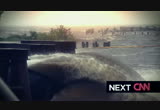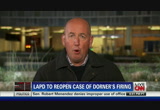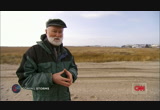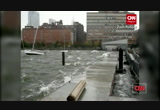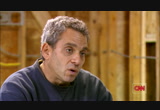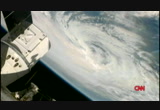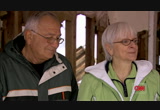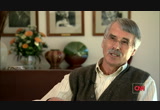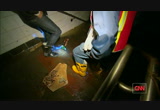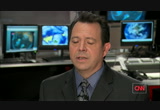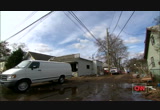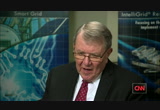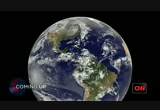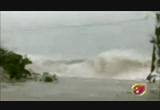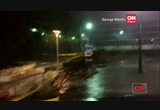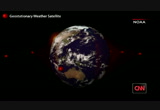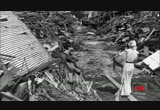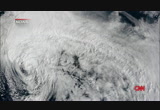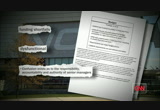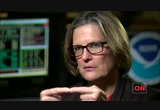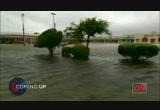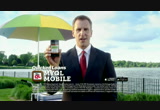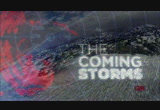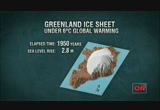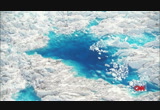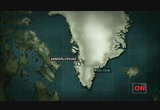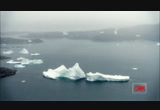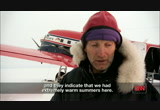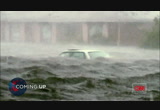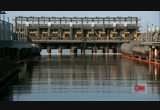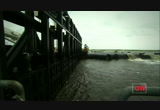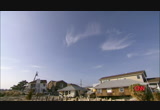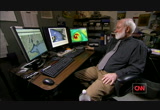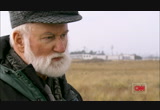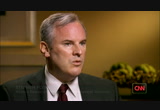tv Piers Morgan Tonight CNN February 9, 2013 6:00pm-7:00pm PST
6:01 pm
>> good evening. i'm brianna keeler nor for don lemon. the lapd tonight says it will reopen the case that led to the firing of renegade excop christopher dorner in 2008. dorner has been the object of an intense manhunt after allegedly killing three people this week including a police officer and the daughter of a former lapd officer. the assistant chief of the riverside police spoke at a news conference a short time ago which a joint task force was announced to find dorner.
6:02 pm
>> we are coming together today to catch mr. corner. what that means is we will look under every rock. we will look around every corner and we will search mountain tops for him. the riverside police department is pledging all of its resources to this effort. >> casey, does this really change anything, do you think? >> perhaps it will, brianna. the reopening of this case against dorner is probably a significant development. and the chief lapd chief just released a statement. here's what he had to say about why they're doing that. i do this not to appease a murderer. i do this to assure a public that their police department is fair and transparent in all things that we do. they have a history of difficult relations with the african-american community here. it's hoping that perhaps by reopening the investigation, the
6:03 pm
lapd will help restore the public's confidence. we asked if a spokesperson believes this macon vince dorner to turn himself in? he says he sure hopes so because this killing needs to stop, this threat needs to stop. >> we'll see you at the top of 6:00 as well with more on this. it's cleaning up and digging out from a brutal two-storm blizzard that's blamed for at least nine deaths. the priority now is getting roads cleared, trains and airplanes moving again. at one point, more than 660,000 homes were in the dark. 500,000 were still without power tonight. we dispatched a team of team of cnn reporters across the country and around the world to investigate, how bad can these storms become? and what can we do now to plan for the next big superstorm when it hits. hurricane sandy threatening to unleash massive damage on the
6:04 pm
u.s. northeast. >> conditions are deteriorating very rapidly. >> certainly felt more rain, more wind, stronger gusts. >> i've never, in 26 years of forecasting, have seen anything like this. >> they are being called superstorms. fueled by changing climate, higher temperatures, and rising sea levels. >> climate change is real. it's here. it's going to happen again. >> people and cities once safe. now in the eye of the fury. >> i see the weather changing. absolutely. >> is this the era of the superstorm? >> water level is rising substantially. >> and are we ready? >> if this wall had been here -- >> for the next one? >> i've been telling everybody, the big flood is coming. we better start building the ark.
6:05 pm
>> living near the ocean, there's always that chance that the ocean is going to come take away everything that you've got. but never did i imagine that this was going to happen to me and my family and my community. >> even now, given all that has happened to him and his family, it is still hard for nick camerada to understand it all. he has lived here, along the shores of staten island, for two decades, with his wife and four boys. back in 2011, camerada survived hurricane irene. so he paid close attention to
6:06 pm
reports of another potential hurricane headed his way in late october. >> it's been a very fickle storm, but it's going to be sucked in here, into the northeast somewhere. >> we were all hoping that the storm was going to blow more towards the south and not come north. >> a few miles away, at columbia university, climate scientist adam sobel was keeping an eye on sandy as well. >> at the beginning, look at that, that would be a big deal if that happened. but a week ahead of time, we don't take it that seriously. >> it is still four days away. this could have a bigger impact on new york city, connecticut, long island, new jersey, than irene did last year. >> as sandy moved north, it merged with a winter storm, creating a superstorm, double the size of a normal hurricane. >> the one part storm that was already on land was combining with the hurricane that was offshore. as they combined, it was almost one plus one equals two and a half. >> many in sandy's path evacuated.
6:07 pm
nick camerada did not. >> at about 6:00, the tide should be way out. i walked down the block, and i started seeing water coming on to cedar grove, and i started yelling and banging on doors for everybody to get out of their houses, because this is going to be a storm of disastrous magnitude. >> i was, as a scientist, fascinated, but as a citizen of this city, as time went on, i started to feel more and more actual fear. >> in new york, as the eye of the storm approached, wind gusts reached 75 miles per hour, and the flood waters outside nick camerada's house were rising, fast. >> try to move the car up the street a little bit, i almost didn't get back to the house. and i couldn't open the door because there was 3 or 4 feet of
6:08 pm
water outside the door. when i grabbed the front door of my house, i got zapped by the power from the transformer on the pole. i got paralyzed, knocked to my feet. felt like somebody grabbed my ankles, my body curled up. at that point, i thought i was dead. my wife opened the window and they pulled me through the window and up the stairs, and that's where, you know, we weathered the storm as a family, up on the second floor watching the storm little by little creeping up, you know, to the second story. >> when they were talking about 6 to 12 feet surge, i knew we were in trouble. >> dominic and his wife sheila live two blocks away from camerada. staying with relatives during the storm, they received a troubling phone call. >> he said, "look, something's wrong, the front of your house doesn't look like." "what do you mean?" "the whole front is tilted down."
6:09 pm
>> when the massive superstorm made landfall, sandy and its record 16-foot storm surge washed away neighborhoods. >> whoa! >> flooded subway stations and tunnels, and cut electricity for millions of people, including those on staten island. >> we never had an idea that it would impact so far north into new york city itself. that's what really surprised me. >> and this is the house, this is your house here? >> this is our house. >> what's left of it. >> the house that donny and sheila trayna had lived in for 40 years, sandy destroyed in minutes. >> if we knew the house was going to blow down, we would have took everything out. >> i had a painting that belonged to my grandparents, it was from the early 1800s, a watercolor that's been in our family. >> tough, tough.
6:10 pm
>> it's painful. sorry. >> yeah. >> many weather experts believe sandy is a grim preview of a future with more powerful and more damaging storms fueled by climate change. >> it's not that these storms wouldn't occur and that they wouldn't happen anyway, but there's a little bit of an extra boost. >> dr. kevin trenberth of the national center for atmospheric research says, without question, the warming of the earth's climate will create more extreme weather. >> we know that certainly is the case with hurricanes. the higher sea surface temperature puts more moisture into the atmosphere. that gets sucked up by the storm. there's heavier rainfalls. it boosts the power of that storm a little bit and makes it just a little bit worse than it otherwise would have been. >> adding to the destructive future of these superstorms, rising sea levels, also fueled by climate change. >> we have satellites in space
6:11 pm
that are measuring sea level to millimeter accuracy now. since 1992, sea level has gone up 2 1/4 inches since then. >> we expect more in the next century. if you start with higher water, the storm surge will be added on top of that until we get a higher flood. >> rising seas, heightened storm surge, a terrifying prospect facing millions of people living on the east coast. >> my community, my neighborhoods, my best friends, they were all affected by this in a way they are never going to be able to recover. >> a community overwhelmed, a metropolis brought to a standstill. can our cities withstand a future of bigger, more powerful storms? let's do this larry! ooh, i got it, i got it! (narrator) the calorie-smart nutrition in beneful healthy weight... includes grains and real chicken, because a healthy dog is a playful dog. beneful healthy weight. find us on facebook
6:12 pm
to help put more play in your day. you know who you are. you can part a crowd, without saying a word... if you have yet to master the quiet sneeze... you stash tissues like a squirrel stashes nuts... well muddlers, muddle no more. try zyrtec®. it gives you powerful allergy relief. and zyrtec® is different than claritin® because zyrtec® starts working at hour one on the first day you take it.
6:13 pm
claritin® doesn't start working until hour three. zyrtec®. love the air. [ babies crying ] surprise -- your house was built on an ancient burial ground. [ ghosts moaning ] surprise -- your car needs a new transmission. [ coyote howls ] how about no more surprises? now you can get all the online trading tools you need without any surprise fees. ♪ it's not rocket science. it's just common sense. from td ameritrade.
6:14 pm
then you're going to love this. right now they're only $14.95! wow-a grt deal just got a whole lot better. hurry. $14.95 won't last. the electrical systems, the fare collections systems, the lighting systems, the stairways, the ventilation systems, the elevators, the escalators, they are all pretty much ruined from the water damage, from the surge damage. >> less than 48 hours after the storm struck, new york city's chief infrastructure officer, frank jesky, took us down into the subway system. >> we'll take a quick look over
6:15 pm
there. >> to what looked like a scene from a science fiction movie, something beyond imagination. >> believe it or not, these timbers washed in from the ocean or the bay. >> this did right here? >> absolutely. >> so this washed in -- >> all this debris that you see washed in from the tidal surge. >> this station, the end of the line for the city's number one subway train, is called south ferry. three years ago, it was brand new, built at a cost of more than half a billion dollars. now it's in ruins. >> sandy broke records for the biggest waves in new york harbor, for the biggest surge in new york city, and for the lowest pressure ever north of north carolina. what was the impactful part of sandy was the surge at 12, 15 feet. that surge had never been seen in new york city before. >> when we were here, the water was just below this mezzanine level. first interview -- >> you can see the rusts on
6:16 pm
these stair treads. >> -- jesky, this time dressed in a suit and tie, took us back down underground. >> it wasn't a rebuild as some of our stations, this was a brand new tunnel station that was built. they've been taken back to the shops and labs -- >> just rebuilding south ferry station alone can take up to a year or more at a cost he's not even willing to guess about. >> we'll start taking components or pieces of the station down, the finished surfaces, the finished ceiling, the acoustic pieces of it. the signal systems will have to be rebuilt. all the conduits and piping will have to be opened up and drained. >> not to mention a sophisticated and intricate control room. >> this is the train dispatchers' office. >> looking now as if a bomb had hit it. >> the dispatchers and supervisors would operate out of this working environment. they had several different workstations where they could see the trains coming in and out
6:17 pm
of the station and further eup the line. completely destroyed. need to be replaced and rebuilt. >> the force of the water so great, it even destroyed escalators designed to last 40 years. >> the actual force of the water coming down the escalator lifted the landing plates from position. the pit itself still has several feet of water standing in it. these are one of our escalators that's a total loss. >> so this is going to have to come out altogether? >> come out and be replaced. >> the destruction here is just a part, a big part, but just a part of the pounding that the infrastructure system took as a result of superstorm sandy. just imagine, if you will, what happened to the electrical grid on the eastern seaboard. >> the northeast, obviously, took a real beating as a result of superstorm sandy. and i think it did reveal a number of weaknesses. among them, questions have come up fairly, i think, whether the utilities really did a good job
6:18 pm
overall. >> clark gellings knows more about the nation's power grid than practically anyone. he's a fellow at the electric power research institute. were you surprised what a beating the system took? >> i was surprised for a couple of reasons. one, i really wonder about the severity of those winds. my gosh, the trees that were taken down. we're not talking about a limb that should have been cut and it happened to brush across a line. we're talking about trees from across the street coming down and taking a power line down on the other side of the street. >> even more surprising, he says, was just how unprepared some utilities seemed to be. >> some of the utilities involved didn't really have a good what's called "outage management system." there were utilities in the northeast that actually had to do this with paper charts on a wall and didn't really have an
6:19 pm
effective computer system. >> on top of that, gellings says, is the nation's aging electrical infrastructure. >> even major components, take, for example, these large transformers, we call them substation transformers. these are the really big guys. the average age in the united states is 42 years. the design life is 40, so we are running on borrowed time. >> not to mention all those millions of utility poles crisscrossing the country. >> you've got poles out there, wood poles, intended actually to be with us for about 40 years, 50 years. they are out there for 80 years. >> money, he says, will help. some of those overhead wires should be buried underground, but all in all, extreme nature holds all the cards. >> give me all the money in the world, and i'll design a power system that will never fail. the point is, you can't afford to do it. there's just no configuration that i can think of that will be absolutely sandy proof.
6:20 pm
absolutely sandy proof.. >> it's just so very hard. >> back in staten island, nick camerada says he isn't going anywhere. despite the destruction, despite the heartache, despite the cost in numbers and the cost no one can really measure. >> how are you? >> i think a lot of people emotionally and physically at this point would just be done, and yet you keep going. >> you have to. because i have no place to go. i have my whole life sitting here, and i got to pray that it doesn't happen again. i got to pray that this is a 100 year storm, and in another 100 years, maybe my kids' kids' kids will be dealing with this. >> but will his children even know the storm is coming? some experts say maybe not. >> we would be blinded, and we would not be able to see what's going on in the system as well as we can now. blaf why not make lunch more than just lunch?
6:21 pm
with two times the points on dining in restaurants, you may find yourself asking why not, a lot. chase sapphire preferred. there's more to enjoy. i have to know the weather patterns. i upgraded to the new sprint direct connect. so i can get three times the coverage. [ manager 2 ] it's like working in a giant sandbox. with all these huge toys. and with the fastest push-to-talk... i can keep track of them all. [ male announcer ] upgrade to the new "done" with access to the fastest push-to-talk and three times the coverage. now when you buy one kyocera duraxt rugged phone for $69.99, you'll get four free. other offers available. visit a sprint store, or call 855-878-4biz.
6:22 pm
visit a sprint store, but that doesn't mean i don't want to make money.stor. i love making money. i try to be smart with my investments. i also try to keep my costs down. what's your plan? ishares. low cost and tax efficient. find out why nine out of ten large professional investors choose ishares for their etfs. ishares by blackrock. call 1-800-ishares for a prospectus which includes investment objectives, risks, charges and expenses. read and consider it carefully before investing. risk includes possible loss of principal. email marketing from constant contact
6:23 pm
6:24 pm
6:25 pm
>> october 22nd, sandy was born. >> tropical storm sandy, heading straight for islands in the caribbean. >> the u.s. at least for now is not in the cone. >> the initial forecast, she might go out to sea, but that changed quickly. >> we were eight days ahead on this storm. we watched this thing on the computers turn left and turn right a couple of times before the one model said this is going to america. >> this could be a big storm as it makes that turn and slams directly into where new york and new jersey come together. >> seven days before the storm hit, computer predictions, called models, put landfall in new jersey. there was time to get ready, board up, evacuate. >> this morning i formally declared a state of emergency in anticipation of hurricane sandy. >> when the storm hit atlantic city on the 29th, it was just five miles, that's it, just five
6:26 pm
miles, from where the earliest forecast said it would cross the coastline. >> it's unprecedented. that's the best word i could use. there's no way any other storm in recent memory has been forecast that good, for that long. >> this pinpoint accuracy came from powerful super computers. they digest tremendous amounts of data about climate, wind speed, temperature, atmospheric pressure. from buoys in the ocean, planes flying through and around storms, satellites orbiting the earth. in fact, 90% of the data those computer models relied upon came from satellites. >> command control, engineering data. >> right out of here? >> yep, right out of here. >> katherine sullivan is deputy administrator of the national oceanic and atmospheric administration, noaa. the agency is in charge of monitoring and distributing data from two kinds of satellites. one type, called g.o.e.s., flies above the equator and provides a close up view of a given area. the other orbit the poles, taking big pictures of the planet's atmosphere.
6:27 pm
>> it's really critical to the global models that let us look ahead into the future, from a day to several days, and understand what the state of the atmosphere will be that will affect weather three, four, five days out. >> days of advanced warning we simply didn't have decades ago. >> this town was just completely demolished. >> something the former mayor of galveston, texas, lyda ann thomas, knows all too well. she grew up learning about the deadliest hurricane in u.s. history from her grandfather, who barely survived the storm. >> the water rose and met in the middle of the island, so the whole island was under water. >> the entire island of galveston was submerged? >> entire island. all 35 miles of it. >> at least 8,000 people died that day, september 8th, 1900. 145-mile-per-hour winds, no warning, 70 years before satellites and high-tech forecasting. there really wasn't any way to
6:28 pm
know, was there, for how bad it was going to be. >> they had no idea. overnight they were like a bomb had exploded in their city and killed everybody. >> over the years, this storm-battered town was in that cone of uncertainty many times. katrina and rita in 2005. ike in 2008. but the people knew those storms were coming. >> the minute it hit the gulf, we went into high gear, but we were prepared to get into high gear. we were able to do that because of the satellites, because of the communication, and because of the warnings we got. >> we could be without power for as much as seven to ten days. >> the same warnings that came as superstorm sandy raced up the coastline. >> people across the eastern seaboard, midatlantic, you need to take this very seriously. >> but history might have told a very different story. just a month before sandy, one
6:29 pm
of those key g.o.e.s. satellites that monitors the atlantic and caribbean where sandy was born went down. >> there was enough uncertainty while we're still in hurricane season that we took the precautionary measure to move the other satellite over. >> perhaps, some experts say, a foreshadowing. dr. kevin trenberth of the national center for atmospheric research says noaa got lucky they had a back-up satellite standing by. >> if there's a major failure of the satellites, that would be a major disaster and we would be blinded in many respects. we would not be able to see what's going on in the earth's system as well as we can now. >> there is concern within a few years that safety net may be gone. independent research supports and internal memos show noaa has
6:30 pm
fallen behind because of budget cuts, complicated organization, and flawed management. i of particular concern, the polar satellites that provide so much of the data on hurricanes and the global big picture. the next generation satellite may not be ready by 2016, when the designed life span of the one up there now ends. >> if we didn't have satellites to predict the weather, it would be like you driving at night without headlights. could you do it? maybe. you'd stay on the road mostly. but you wouldn't be a very good driver. >> the effect, startling. researchers found if they didn't have the data from the u.s. polar orbiter, the new forecast would have turned sandy out to sea, potentially leaving people little warning. are we blowing it out of proportion? >> the confidence level, the probability management, we would normally manage our constellation to 70% assurance that this satellite is still working at the time i get a new satellite up there. our projections right now don't give us that confidence interval. it's below that. >> so sullivan's team is trying to speed up satellite
6:31 pm
manufacturing and launch, but at a cost of $1 billion, each one requires five years to build and launch. it's a race against time. >> we're determined to fulfill the mission, working as fast as we can, we're putting the right people into place. i'm trained as an astronaut. i'm not satisfied until we're back home and the mission is a success. >> a crucial mission as climate change threatens to intensify the storms ahead. next, what the polar icecap is telling us about how damaging those storms could be. next, what the polar icecap is telling how damaging those storms could be. and later -- >> water level is rising. >> -- can we be ready for the next big one? >> we have been whistling by the graveyard for too long when it comes to dealing with a major weather event. here are your headlines this hour. i had enough of feeling embarrassed about my skin. [ designer ] enough of just covering up my moderate to severe plaque psoriasis.
6:32 pm
i decided enough is enough. ♪ [ spa lady ] i started enbrel. it's clinically proven to provide clearer skin. [ rv guy ] enbrel may not work for everyone -- and may not clear you completely, but for many, it gets skin clearer fast, within 2 months, and keeps it clearer through 6 months. [ male announcer ] enbrel may lower your ability to fight infections. serious, sometimes fatal events, including infections, tuberculosis, lymphoma, other cancers, nervous system and blood disorders, and allergic reactions have occurred. before starting enbrel, your doctor should test you for tuberculosis and discuss whether you've been to a region where certain fungal infections are common. you should not start enbrel if you have an infection like the flu. tell your doctor if you're prone to infections, have cuts or sores, have had hepatitis b, have been treated for heart failure, or if you have symptoms such as persistent fever, bruising, bleeding, or paleness. if you've had enough, ask your dermatologist about enbrel. [ male announcer ] how could a luminous protein in jellyfish, impact life expectancy in the u.s.,
6:33 pm
real estate in hong kong, and the optics industry in germany? at t. rowe price, we understand the connections of a complex, global economy. it's just one reason over 75% of our mutual funds beat their 10-year lipper average. t. rowe price. invest with confidence. request a prospectus or summary prospectus with investment information, risks, fees and expenses to read and consider carefully before investing. pretty sweet, huh? cute. but don't you have any apps on your phone that can make your life easier? who do you think i am, quicken loans? at quicken loans, we'll provide you with myql mobile. this amazingly useful app allows you to take pictures of your mortgage documents using an iphone or android smart phone... so you can easily send them to us. one more way quicken loans is engineered to amaze. ooh, la-la!
6:36 pm
thousands of miles beneath the weather satellites, in one of the most remote places in the world, lie vital clues about the planet's future. greenland's arctic ice field is a vast and beautiful piece of nature. it's the second largest ice mass in the world, but it's also very vulnerable to environmental effects like temperature changes. we're taking part in a research mission that's trying to better understand the processes that are at play to more accurately predict how fast the ice here is melting. greenland's ice masses are more than twice the size of texas. this frozen wonderland is constantly in motion. a recent study found this arctic ice shield is losing mass at an
6:37 pm
alarming rate, close to 300 square kilometers, or about 115 square miles, each year. some fear greenland's ice might disappear all together. if that happened, global sea levels would rise seven meters, or about 23 feet. to survey the ice, scientists use one of the most advanced research aircraft in the world, polar 6. its operational base in greenland is at kangerlussuaq, north of the arctic circle. a former american military base and a territory's largest airfield. the project's leader daniel steinhage and his crew are gearing up for their first survey flight over the massive ice shield. missions like this one can take over six hours and lead halfway across the greenland ice sheet. they need to be planned and executed absolutely precisely to make sure the scientists get exact readouts. we reached the glaciers on the fringes of the inland ice, and the arctic's summer's melt is clearly visible. clear blue melt water ponds dot the landscape, growing as the sun shines on the ice. a research camera installed on the plane's belly also records
6:38 pm
the images as polar 6 advances towards the radar survey area. nasa satellite images recently showed unprecedented surface ice melt here, with about 97% of greenland's ice sheet showing signs of thawing. soon, the glaciers and melt water ponds disappear and there's nothing below but ice. it's almost impossible to distinguish the clouds from the ground. >> we're getting very close to the area of operations right now. it's right in the heart of greenland, and the ice sheet at that area is up to two miles thick. the scientists turn their equipment on and begin the survey. our route takes us to the center of the inland ice.
6:39 pm
we're getting the first readouts. tell me what we're seeing here. >> this is surface reflection. >> the arctic is something like an archive of the earth's climate. in its layers, much like in the rings of trees, researchers can find information on temperatures, the amount of precipitation, dust particles, and ash from volcanic eruptions dating back 100,000 years. after several hours in the air, polar 6 makes its way back to kangerlussuaq airfield. it will take months to evaluate the data from these flights. >> if we can explain the past, what happens there, then we can use the same programs to run it forward to see what the future will bring us. then we have scenarios where we have changes in temperature in moisture distribution and all these things. >> what these scientists are seeing is that greenland's ice sheet is vanishing quickly. a fact confirmed by the 2012 noaa arctic report card.
6:40 pm
the report reveals an unprecedented loss of summer sea ice and record melting of greenland's ice sheet. to understand why, polar 6 lands at another site six weeks later. they drill deep into thousands of years' worth of ice. soon, the first ice cores emerge. long before the official lab analysis, one scientist can identify some unique patterns even with his naked eye. >> what we can see here definitely are prominent melt layers, so they are so prominent, i have never seen them so far. and steff, who was here 30 years ago, he doesn't remember any melt layers at that time. we had one or two centimeter thick melt layers, and they indicate that we had extremely warm summers here. >> the ice cores are essentially compressed snow that fell here
6:41 pm
over tens of thousands of years. each layer holds a record of the climate in a certain era. the further down they drill, the further they go back in time. one of those taking part in the drilling mission is trevor popp, a climatologist from the university in copenhagen. >> these ice cores in greenland tell us basically the past climate, what the ice can record. and this is stuff like temperature, the amount of precipitation, the seasonal precipitation, dust impurities in the atmosphere, and importantly changes from year to year that you might see. >> by studying how quickly, how often, and why temperatures change in the past, scientists can better understand how our climate is evolving today. for now, one thing seems clear, melting ice and rising sea levels increase the potential of a damaging storm surge, and that can be catastrophic. especially when it comes to a storm like hurricane katrina. what did the death and devastation teach us, and are we ready for the huge storms ahead?
6:42 pm
you're crazy. go faster! go faster! go faster! go faster! no! stop...stop... (mom) i raised my son to be careful... hi, sweetie. hi, mom. (mom) but just to be safe... i got a subaru. (announcer) love. it's what makes a subaru a subaru. [ bop ] [ bop ] [ bop ] you can do that all you want, i don't like v8 juice. [ male announcer ] how about v8 v-fusion. a full serving of vegetables, a full serving of fruit. but what you taste is the fruit. so even you... could've had a v8.
6:43 pm
get ready for a lot more of that new-plane smell. we're building the youngest, most modern fleet among the largest us airlines to ensure that you are more comfortable and connected than ever. we are becoming a new american. it's part of what you slove about her.essing. but your erectile dysfunction - you know, that could be a question of blood flow. cialis tadalafil for daily use helps you be ready anytime the moment's right. you can be more confident in your ability to be ready. and the same cialis is the only daily ed tablet approved to treat ed and symptoms of bph, like needing to go frequently or urgently. tell your doctor about all your medical conditions and medications, and ask if your heart is healthy enough for sexual activity. do not take cialis if you take nitrates for chest pain, as this may cause an unsafe drop in blood pressure.
6:44 pm
do not drink alcohol in excess with cialis. side effects may include headache, upset stomach, delayed backache or muscle ache. to avoid long-term injury, seek immediate medical help for an erection lasting more than four hours. if you have any sudden decrease or loss in hearing or vision, or if you have any allergic reactions such as rash, hives, swelling of the lips, tongue or throat, or difficulty breathing or swallowing, stop taking cialis and get medical help right away. ask your doctor about cialis for daily use and a 30-tablet free trial.
6:45 pm
plays a key role throughout our lives. one a day men's 50+ is a complete multivitamin designed for men's health concerns as we age. it has 7 antioxidants to support cell health. one a day men's 50+. ♪ many hot dogs are within you. try pepto-bismol to-go, it's the power of pepto, but it fits in your pocket. now tell the world daniel... of pepto-bismol to-go.
6:46 pm
august 2005. hurricane katrina smashes into the gulf coast. 1,800 dead, $100 billion in damage, the most catastrophic disaster in recent u.s. history. caused by a storm surge that could have been stopped. >> after the storm, i came by to patrol this area in a boat, and the water was actually over that gutter line. >> new orleans police officer steve fox lost everything when the 17th street canal collapsed. >> water as far as the eye can see. neighbors are gone, everything destroyed. you couldn't believe what you were seeing. >> garrett graves couldn't believe it either.
6:47 pm
>> the force of these walls collapsing with the wall of water that came down, literally, just blew everything out. it was just a game changer. >> graves is the assistant to the louisiana governor bobby jindhal, overseeing the new hurricane protection plan. >> never forget those images. it's one of the reasons so many people here have such resolve to make sure that we never allow anything like that to happen here again. >> katrina proved new orleans was a disaster waiting to happen. the storm revealed an inadequate and outdated system of levies and flood walls that failed and caused the massive flooding. >> i think that some of the major flaws in the system were a lack of recognition for the actual strength or power or storm surge associated with a hurricane. in some areas not anticipating that water would truly be up against the top of a levee or the top of a flood wall and putting that much pressure upon the system.
6:48 pm
>> after katrina, new orleans, and the u.s. congress said never again. spending $14.5 billion in mostly federal funds to build a fortress around the city. among its most powerful new weapons, the largest storm surge barrier in the world. where we are now, is this where the majority of the flooding came through in hurricane katrina? >> well over 20 feet of water came surging through this area where we are right now. it just funneled in and rushed into the city of new orleans. >> this massive wall is drilled 190 feet into the earth and towering 26 feet above the water. how much stronger are these walls that have been built around here than what was in place before? >> absolutely incomparable. you have about 50 times more steel in this than the eiffel tower. >> where this barrier begins, 150 miles of stronger levies and higher flood walls connect, forming a circle around the city
6:49 pm
and keeping the deadly storm surge out, but this illusion brings its own problems. essentially, what has been built around the city of new orleans is a wall, it's almost like a giant bathtub. >> it is, it is. which causes additional problems, because when you create a bowl, then when you have rainfall from hurricanes or other events, you then potentially fill up that bowl and flood homes a different way. every time you build these walls, you have to think about how you're going to evacuate the water or pump the water out of the bowl. >> to empty the bowl, another epic solution, new orleans built the world's largest water pumping station. >> it can pump about 30,000 cubic feet of water per second, which is just extraordinary. so that pumping station can fill an olympic-sized swimming pool in about four and a half seconds. >> and there are 76 more pump
6:50 pm
stations like this, giving new orleans what might be the best hurricane protection system in the country. the people who might move into this neighborhood now, who don't trust this wall, what would you tell them? >> i would tell that that this is the safest this area has ever been. you'll never have storm surge against the other side of this wall again. >> that promise is what convinced steve fox to return to his lakeview neighborhood and rebuild. >> born and raised, i'll die here. it's my community. i took a stand. love new orleans, and i knew i was coming back. >> but fox knows the storms will come back, too, and in case the walls and levies fail again, he built a last line of defense, a hurricane-resistant home. >> i can tell you one thing, if the contractor that built my house built those levee, that canal would have never broke. >> his new house and his city faced their first test last august, when hurricane isaac brought a storm surge close to the size of katrina's. grave said the damage could have been catastrophic, but the new infrastructure kept fox's home and the city dry. >> when you look at the
6:51 pm
likelihood of hurricanes hitting this area, no question in my mind that this system's going to pay off multiple times. >> what do you think the difference would have been had all of this been in place before hurricane katrina? >> i think that the day after hurricane katrina, we would have been going back to work and that we would have been sleeping in our own beds, in our own homes, and we wouldn't have been looking for hundreds of body bags and caskets and planning 1,800 funerals. >> it took 1,800 lives and $100 billion to change new orleans. what will it take to change the orleans. what will it take to change the rest of the country? s a tesdriv. whoa! you really feel all 335 foot-pounds of torque. it's chevy truck month! silverado was also recognized for the lowest cost of ownership. hey, what are you gonna do with it? end table. oh. [ male announcer ] it's chevy truck month. now get 0% financing for 60 months,
6:52 pm
plus trade up to get $1,750 total allowance on a silverado all-star edition. or trade up and choose customer cash plus option package discount for a total value of $7,250. with the bing it on challenge to show google users what they've been missing on bing. let's bing it on. [fight bell: ding, ding] how many here are google users? what if i was to tell you that you would actually like bing way more than google when it came to the results? prove it. let's look up some taco places. i like the left side. yeah? okay, do we need to find out what the waves are like down at the beach? what side do you like better? i like the results on the right. i'm gonna go with the one on the left. oh! bing won! people prefer bing over google for the web's top searches. don't believe it? go to bingiton.com and see what you're missing. target is in sight. yes, dad, i see him. now pour some chloroform into a white rag and.... no. hi. i understand you're looking for a hotel with a pool. with priceline express deals, you can save big and get exactly what you need. do i have to bid?
6:53 pm
use the stun gun. he's giving you lip. no! he's just asking a question. no bidding. awesome. get the grappling hook to... dad, i... no? ok. woman: what do you mean, homeowners insurance doesn't cover floods? [ heart rate increases ] man: a few inches of water caused all this? [ heart rate increases ] woman #2: but i don't even live near the water. what you don't know about flood insurance may shock you -- including the fact that a preferred risk policy starts as low as $129 a year. for an agent, call the number that appears on your screen.
6:55 pm
when superstorm sandy hit breezy point, new york, ocean waves crashed city streets and knocked houses off their foundations. the only choice residents had was to head for higher ground. 92 they were sitting ducks. there was nothing they could do except run. >> how high was the water right here? >> the water would be probably six feet above our heads. >> six feet? >> above our heads. 12 feet, say. >> malcolm bowman is an expert on the many dangers of a storm surge hitting new york. surveying the damage, he reveals that everything resee left by superstorm sandy is a better contradictio
6:56 pm
contradictions, apparently inevitable yet tragically preventable. >> how do you stop something like that? >> you can't stop it except if you're going to build some kind of regional protection system for metro new york. >> bowman leads the storm surge research group at long island's stonybrook university. the group promotes a plan called the outer harbor gateway, elaborate system of barriers and causeways that would virtually flood proof much of metro new york all for billions less than the cost of the damage done by sandy. >> the barrier itself across the five mile opening to new york harbor would cost about $13 billion. in addition, sand berms on both si sides, on the sandy hook side and far rock away side would need to be build up for $5 billion. for $20 billion, we could have complete pro-tech for new york harbor and major new york
6:57 pm
airports. >> a 20 billioned project that would take decades to complete compared to the $30 plus billion needed right now to fix new york storm damage. it's hardly a radical idea or a new one. similar barriers already exist in stanford, connecticut and providence, rhode island. massive barriers are also in operation in europe. >> people ask me if the dutch can do it, if russians can do it, why can't we? >> bowman warned of the need for storm barriers years ago warning in the "new york times" after katrina in 2005 and tried again in 2008 on a climate change panel by mayor bloomberg but none were built. >> if barriers and sand berms had been built in the last eight years none of this would happen. i've been trying to get this
6:58 pm
message out this will happen and will happen sooner or later. i feel my middle name is noah. the big flood is coming, we better start building the ark. >> new york city isn't the only city lagging behind in rising sea levels an not every problem can be solved by building walls. >> so here in boston you have the problem so many east coast cities are facing. we built the city on the water. >> steven flynn is a leading advocate for investigating big in projects that make the u.s. more resilient to disaster. >> on a scale of 1-10 how prepared are we right nowen the northeastern u.s.? >> on the scale oven with-10, we're in roughly a 3 range. >> 3? >> we have been whistling by the graveyard too long when it comes to dealing with a major weather event especially in the
6:59 pm
northeast. >> one place to start, he say, could be power grids and transit systems, critical yet storm vulnerable infrastructure that gives coastal cities life. >> americans basically have got themselves into thinking bad events are things somebody else is supposed to prevent from happenin happening. >> prevent and pay for. take for example the choices now facing the people of breezy poin point. >> did these people have any protection at all? >> they have no protection at all. we're looking forc ing towards . you cannot see it behind this. it's it's about a quarter of a mile from us it's flat, as flat as a football field. >> malcolm boman says the construction of sand dunes 30 feet high would have been enough to keep breezy point dry, a
142 Views
IN COLLECTIONS
CNN (San Francisco) Television Archive
Television Archive  Television Archive News Search Service
Television Archive News Search Service  The Chin Grimes TV News Archive
The Chin Grimes TV News Archive 
Uploaded by TV Archive on

 Live Music Archive
Live Music Archive Librivox Free Audio
Librivox Free Audio Metropolitan Museum
Metropolitan Museum Cleveland Museum of Art
Cleveland Museum of Art Internet Arcade
Internet Arcade Console Living Room
Console Living Room Books to Borrow
Books to Borrow Open Library
Open Library TV News
TV News Understanding 9/11
Understanding 9/11